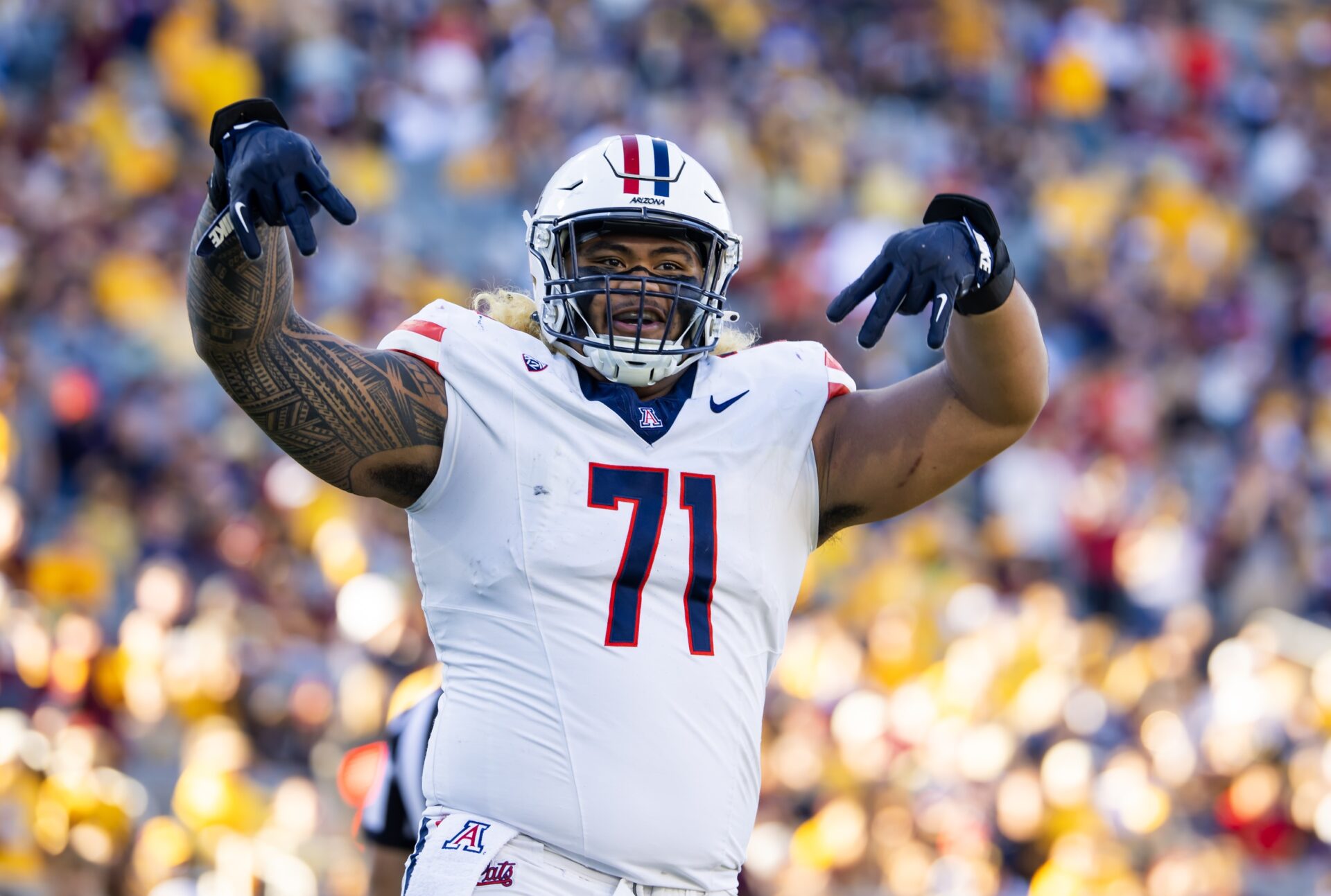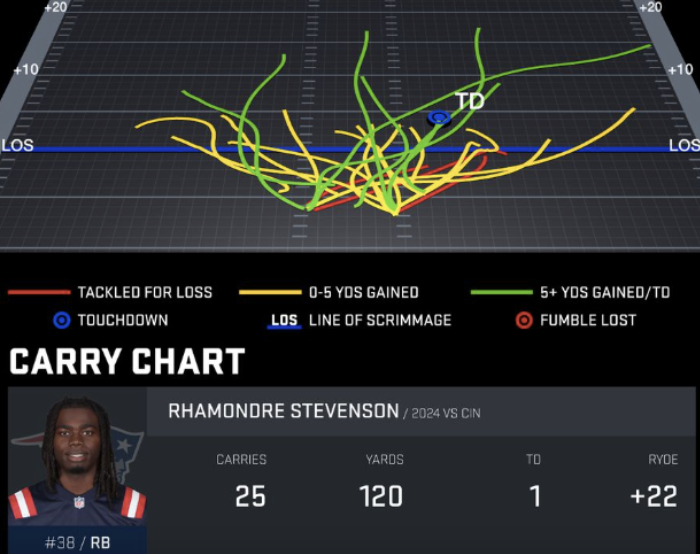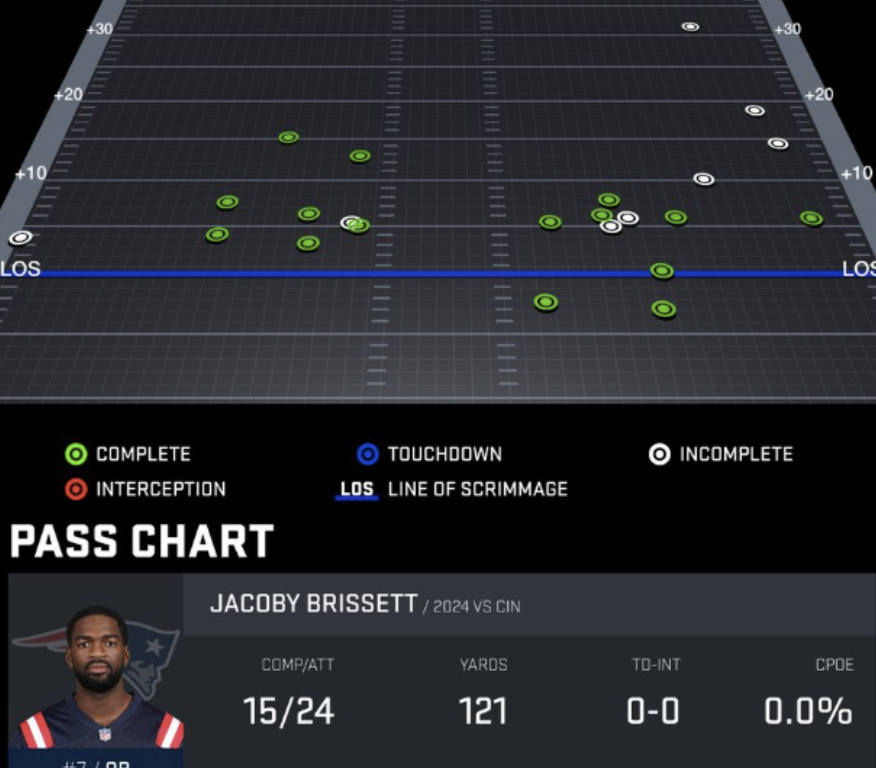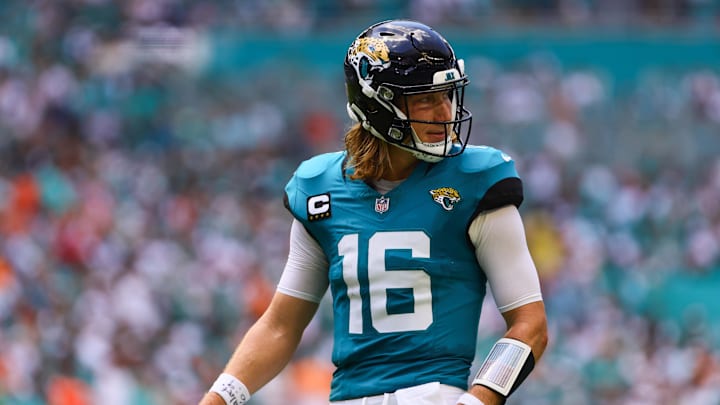
It’s still too early to form any big opinions on the 2025 draft class — and it’s especially too early to pass judgement on what the Seahawks could potentially do next April. However, I wanted to share some thoughts as we approach the fourth weeked of the college football season.
Currently I think this is shaping up to be a difficult first round, with only a handful of blue-chip players and little in the way of legit first round depth. There have been years when a board looks this way in September/October and changes by the end of the season, Senior Bowl and combine. At the moment though, it’s not looking like a particularly strong draft at the top end.
When there have been drafts like this in the past, such as in 2013 and 2015, the Seahawks traded premium draft stock for proven veterans. That’s something to remember. They also made the expensive Jamal Adams trade during the covid-impacted era, when it was trickier to get intel on prospects.
I’m not predicting the Seahawks will make a move similar to the Leonard Williams trade pre-deadline, or go big-game hunting in the off-season for a star, but unless there’s a big change in how the first round is looking, I wouldn’t rule it out.
One of the big off-season areas of focus will be the offensive line. I talked about this the other day but Will Campbell at LSU, often touted as a top-10 pick online, is not playing remotely close to that level. I’m not convinced he can stick at tackle and might have to move inside and I have a day-two grade on him currently. His team-mate Emery Jones has only been marginally better — but at least he has a bit more intensity to his play.
Kelvin Banks Jr at Texas has been better but still mostly ‘good’ not ‘great’ and I wonder if he’s destined to move inside too. I think he has a legit shot to go early but it’ll be interesting to see if the league views him as a tackle or guard.
There are some tackles I think are being undervalued. Ohio State’s Josh Simmons has ideal size, good feet and pass-protects well. I think he could be a top-45 pick at tackle. Jack Nelson at Wisconsin can be a tone-setting, physical right tackle or a dominant guard. I’m usually sceptical of small-school buzz online but Charles Grant at William & Mary is legitimately athletic and looks the part. How he performs at the Senior Bowl, assuming he attends, will make or break his stock. Aireontae Ersery at Minnesota also has all the physical tools required to start at the next level.
I’d be particularly interested in Nelson to play guard in Seattle with right tackle versatility and I believe he warrants a second round grade. However, there are two other players I want to focus on here. Alabama’s Tyler Booker was the first non-quarterback I wrote about for this draft cycle and I still rate him very highly. He has great size, he plays with an edge, he’s a five-star athlete and he’s even spelled at left tackle this season. He is an A+ character player and could be a day-one starter next year. The Seahawks will probably need to find a new starting left guard for 2025 so the fit makes sense.
The other player is Arizona’s Jonah Savaiinaea. He is starting at tackle currently. I don’t like that fit. I think his footwork will be a problem defending NFL speed off the edge. However, I think he can be an exceptional guard. When he can block square-on, place his hands on an opponent and control blocks, his vice-like grip and tremendous power make him a dominant force. If a team is willing to move him inside, I suspect he could quickly develop into one of the better NFL guards. Both he and Booker play with a physical intensity combined with plus athleticism.
The other interior line options are thin. It’s looking like a quite poor center class — the hope will have to be that the Senior Bowl uncovers some options here, possibly through converting players to the position. I am looking forward to seeing how Parker Brailsford gets on in the SEC for Alabama. However, I’d advise rooting especially hard for Connor Williams to succeed this year and earn an extension. Ohio State’s Donovan Jackson has excellent athleticism but last year his tape was so underwhelming. This is a big year for him. I think Georgia’s Dylan Fairchild warrants third round consideration currently but I found his team-mate Tate Ratledge (who is having surgery on an ankle injury) a little bit overrated.
I’m starting to lose faith that we’ll ever see a truly dynamic, modern tight end in Seattle. In fairness, they are rare. As we’re seeing with Kyle Pitts — even the supposed sure things can fail to make an impact. The Seahawks drafting AJ Barner this year perhaps spoke to how they might approach things going forwards, although they did re-sign Noah Fant. It is a good tight end class though — with Colston Loveland a near lock for the top-20. Tyler Warren is my favourite non-first round type — he has an excellent, rounded skill-set and could be a top-50 pick. Mitchell Evans, Jake Briningstool, Mason Taylor and others have impressed so far, while I’m looking forward to watching Utah for Brant Kuithe.
There are good defensive linemen eligible for next year. Mason Graham at Michigan should be a top-five pick. TJ Sanders at South Carolina is someone I think has top-50 potential. Tyleik Williams has tremendous run-defending ability with the potential to be more than he’s shown as a pass rusher. Howard Cross is a pure penetrating threat but lacks ideal size. I think Kenneth Grant and Deone Walker are a little bit overrated and see them more as day two types (many consider them first rounders).
Abdul Carter and Jalon Walker are two dynamic playmaking linebackers who would fit well in the Mike Macdonald system — but both could/should go early. After that, it feels like an underwhelming linebacker group with mostly mid/late round types — although I need to do more work on the position. Alabama’s Deontae Lawson reads plays very well and just seems to gravitate to the ball. He has second round potential. Team-mate Jihaad Campbell has the frame of an edge rusher and might be an ill-fit at the next level playing off-the-ball linebacker but he also has major athletic talent.
There will be opportunities for teams to add in the secondary. Aside from the bigger names, I really enjoyed watching Shavon Revel and think he will have a good chance to go in round one at cornerback. South Carolina safety Nick Emmanwori really intrigues me, I’m a big fan because of his great size, speed, instinct and versatility. There are other safety’s too — Kevin Winston Jr, Keon Sabb, Lathan Ransom, Hunter Wohler and Rod Moore have caught the eye. Malaki Starks will likely be out of reach.
I’ll finish with the much-discussed quarterback position. An argument is often made that because Geno Smith has had an unusual career path and hasn’t actually started many games since entering the league in 2013, he might be better positioned to enjoy a longer career deep into his 30’s. The Seahawks can’t bank on this. The worst thing they could do is assume Smith will be able to play on for years to come (they won’t do this) as it’s something very few quarterbacks achieve.
Smith turns 34 in less than a month. He is in the latter end of his physical peak and to his credit still looks incredibly sharp athletically. Yet when players get to their mid-30’s, nature tends to take over. Whether you’ve started 40 NFL games or 200, getting old is getting old. The Seahawks seem to be taking things year-to-year which is wise.
The best approach would be to plan for all eventualities — and it looks like the Seahawks are well on top of this. That’s why they made the Sam Howell trade. They knew they had to add a younger player this year and will likely continue to look to add.
By taking this approach they’ll be covered either way — they can plan for the future while also retaining Smith if he’s able to perform at a good level for a few more years.
Given the experience of the 2023 quarterback class so far, not to mention the growing pains for the 2024 class in the first two weeks, it wouldn’t be a bad plan to draft a quarterback with the intention of bedding him into the system without any pressure to start early. After years of the NFL throwing quarterbacks in at the deep end, we might be about to see a shift. This will be even more likely if Michael Penix Jr excels in 2025, 2026 or whenever he replaces Kirk Cousins in Atlanta.
It certainly worked for Patrick Mahomes. Clearly Mahomes also had the talent and the right coach and weapons. That helps. Yet this feels like the best plan to mimic for Seattle. Copy the Chiefs if you can. Smith is similarly well placed, as he’s showing, to be a similar or perhaps even better version of Alex Smith in Kansas City. Drafting someone in 2025 or 2026 as an heir-apparent would be prudent. Then you won’t have to start a rookie and can make an educated call on when to pass the torch.
There’s no downside to this. The worst case scenario is Smith plays deep into his 30’s and you never hand off the baton to the new guy. This isn’t a problem at all though, because it’d simply mean Smith playing well enough to warrant remaining as the starter. As the Eagles showed when they controversially drafted Jalen Hurts in round two despite recently paying Carson Wentz, you can never over-prepare at the most important position in football.
The best case scenario would be a seamless transition as we saw with Mahomes. Win now with Smith, yet still plan for the future. The Seahawks have an ideal opportunity here that few teams possess.
However, it also takes the right player being available. I’m not yet convinced that the right player is in the 2025 class. Quinn Ewers is an excellent talent but he’s injured again. Shedeur Sanders does not strike me as an individual John Schneider would rush to anoint as the future of the Seahawks franchise. Is Carson Beck dynamic enough as a passer or as a person? Will he go too early anyway?
There are players I can imagine Schneider having interest in beyond the three most talked about quarterbacks. Garrett Nussmeier is showing legit potential as a pro-level pocket passer at LSU and I wrote about him in detail on Wednesday. He might prefer a second year starting for the Tigers before turning pro but with the technical level he’s showing, there’s a chance he will start to move into legit top-50 consideration.
Cam Ward has physical tools and a personality I think the Seahawks will be open too — but I do wonder whether his tendency to drift in the pocket and be too quick to improvise may be exposed later this season. I wrote about this in more detail here. At the moment Miami are beating up weak opponents. Ward unravelled somewhat at Washington State when facing adversity.
As much as I wrote in the week about a reality check on Jalen Milroe’s supposed development, I do think he’ll be a name to monitor closely throughout this process. His inability (so far) to throw over the middle, a lack of processing evidence from the pocket and the fact he’s pretty much playing as a big-armed running back will likely preclude him from being considered by the Shanahan tree coaches.
However, we know John Schneider likes a big arm and athleticism at the position. Ryan Grubb wants to attack all areas of the field and Milroe has the arm to do this. He’s playing for Kalen DeBoer this year which could lead to crossover potential. Character and personality matters a lot to Schneider at this position and Milroe is A+ in that category. He might be a uniquely intriguing quarterback to the Seahawks. Not to mention he could be available in a range between picks #60-80, depending on what happens during the rest of this season. It’ll be interesting to see what he does against Georgia in Alabama’s next game, which takes places a week on Saturday. Although I will say, at the moment I don’t see a player remotely close to being ready to start in the NFL. He still looks like a great athlete playing quarterback and he needs to be better from the pocket.
There are others too. I think Drew Allar’s frame, arm and athleticism are right up Schneider’s street but I’m not sure you can take him earlier than round four. Let’s see how Will Howard’s season at Ohio State goes. We’ve also talked recently about Brady Cook, Miller Moss and Max Brosmer — plus Riley Leonard will try and repair his stock after the nightmare of Northern Illinois.
Personally I don’t have a problem — at all — with John Schneider being picky at the quarterback position. He hasn’t whiffed on anyone since the Russell Wilson trade, so why wouldn’t you back his judgement? If there is someone he likes next year, or in 2026, I don’t think he’ll hesitate to pull the trigger. For the right player I think he’d be aggressive if necessary.
Having Geno Smith playing the way he is currently makes this a good situation for Seattle. If he continues this level of performance, they don’t have to force anything. Look how being desperate has impacted the Carolina Panthers. They traded for Sam Darnold, Baker Mayfield and Bryce Young. They tried to acquire Deshaun Watson. It’s been a disaster. The Seahawks have positioned themselves to avoid this. They can now play the ‘win now’ game and look ahead.
As for Sam Howell, I’m not writing him off. You have him under contract for another year next season and it’d be ideal to have him remain as a backup with starting experience at a cost effective price. If he grows within the next 12 months to warrant consideration to be ‘the guy’ in the future, great. At the moment it’s difficult to project he’ll be a future starter. He lasted to round five for a reason despite having no character or injury concerns. I graded him in round four and he went about where he should’ve gone in the draft. He’s a plus backup but he’s not likely, in my opinion at least, to be the person who eventually takes over from Smith as the next starter.
I’ve mentioned a lot of names in this piece but it’s important to remember it’s only the 19th September. Things can and will change. Players can still emerge and stock will fluctuate. The Senior Bowl is critical in this process, as is the combine. Furthermore, we’re only two games into the Seahawks’ season. This time last year, Seattle had one horrible loss to the Rams and one great win in Detroit. Who could’ve predicted what followed? By this time next month, things could’ve changed. That’s why we’ll keep reflecting and discussing both the current roster and players in the draft cycle.
Finally, if there’s another site on the internet producing 5750 words of draft/Seahawks talk in two pieces in the middle of September, I haven’t seen it. So if you appreciate what we do — subscribe to our YouTube channel, watch the videos we do including the weekly hit with Puck Sports and there’s Patreon too if you want to support our work.








